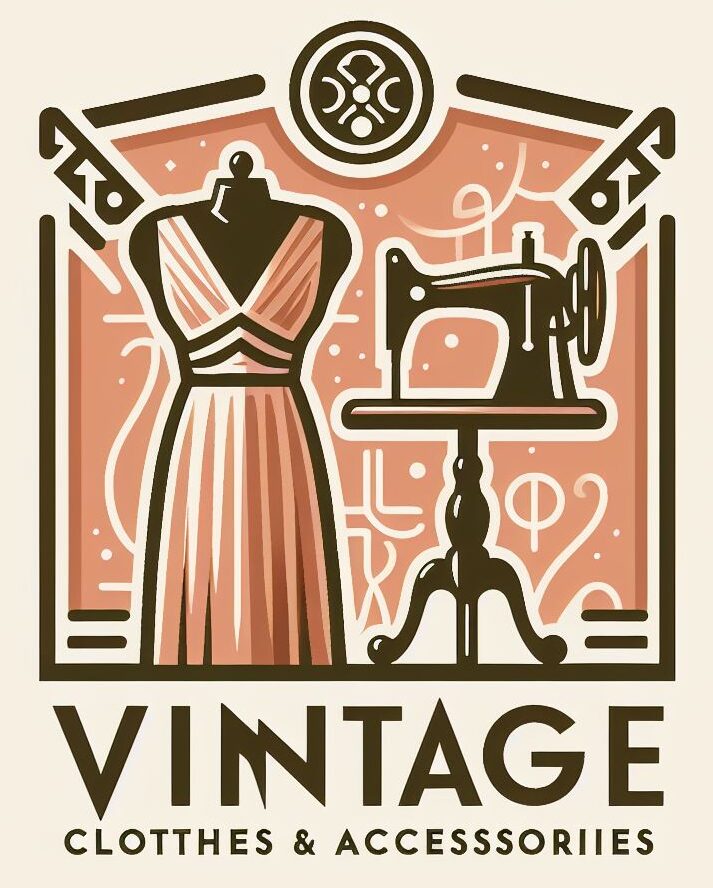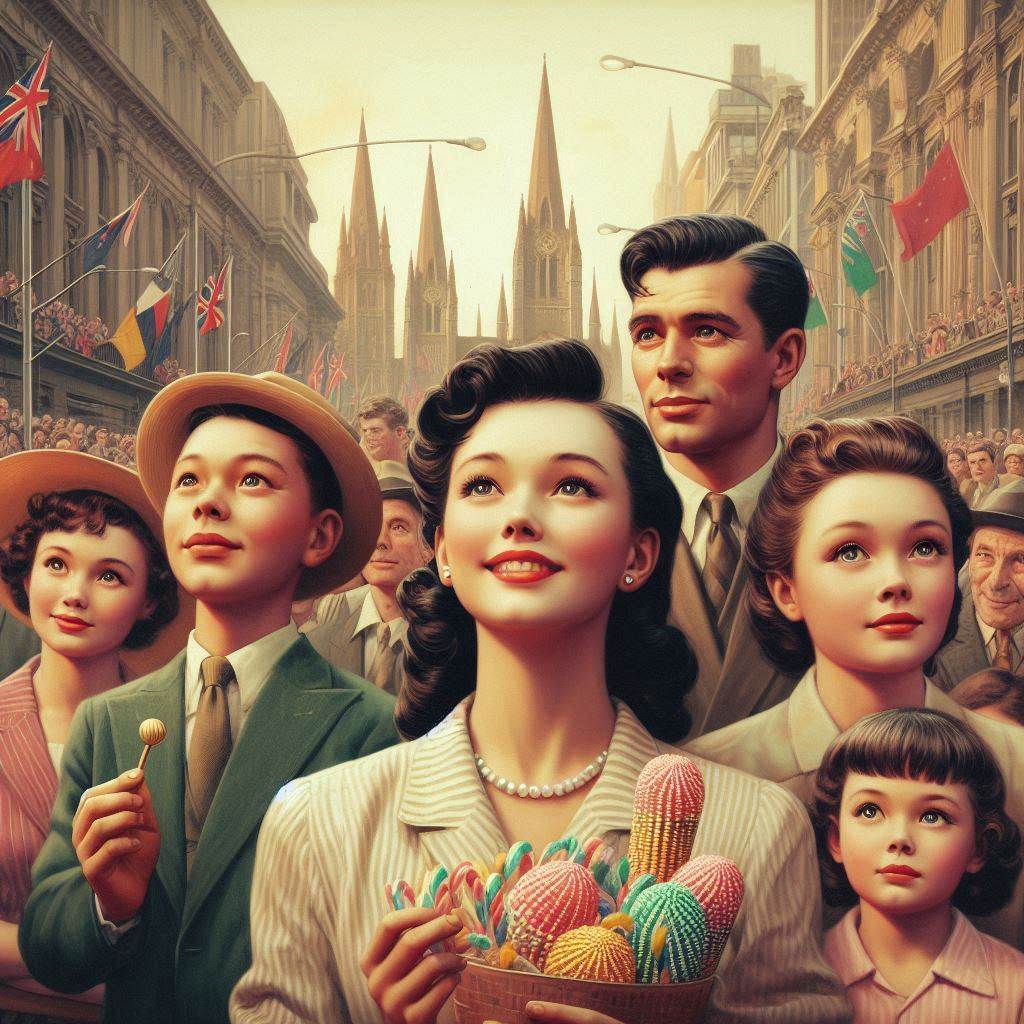Moomba Madness: A Nostalgic Journey Through Melbourne’s Beloved Festival
Exploring the Vintage Era of Moomba
The Moomba Festival is one of Melbourne’s most beloved events, known for its vibrant celebrations of culture, music, art, and community spirit. Its history dates back to the early 20th century, and it has evolved from a small local gathering – into one of Australia’s largest and most iconic festivals. Here’s a look into the origins and evolution of Moomba, with a focus on its vintage era.
Origins of Moomba
The origins of Moomba can be traced back to 1955, during a time when Melbourne was emerging from the post-war era. The idea for a grand festival was conceived as a way to bring the community together, celebrate the city, and offer a unique, fun-filled event for people of all ages. At the time, Melbourne was in need of a major event – to unite and energize its population after the hardships of war.
The festival was initially called the “Moomba Festival” as a nod to Indigenous Australian language. “Moomba” is believed to be a word from the Woiwurrung language, meaning “let’s get together” or “come together.” The festival was intended to embody this spirit of unity and celebration, representing a diverse community coming together for fun and festivity.
The Early Years (1950’s – 1960’s)
The first Moomba festival took place in 1955, and it featured a water carnival on the Yarra River, alongside a range of street parades, music, and arts performances. At this time, the festival was modest in scale but packed with local charm. The first parade included small community groups, floats, and participants dressed in colorful costumes. The water carnival – a key feature, included boat races and water-related activities on the Yarra River, which would later become a staple attraction of the festival.
One of the key aspects of the early Moomba celebrations was the crowds and the energy. Recovering from post War, the festival created a sense of community pride and excitement that helped shape Melbourne’s identity as an emerging cultural hub in Australia.
1960’s: A Shift Toward More Diverse Entertainment
By the 1960’s, this celebration was growing in popularity and began to evolve. The festival began to feature a wider variety of entertainment that appealed to a more diverse audience. The Moomba Parade, that started from humble beginnings – became the festival’s highlight, showcasing extravagant floats, performers, and a wide array of costumes. It also became the backdrop for the city’s colorful civic life, with floats representing both corporate sponsors and community organizations.
The 1960’s saw the introduction of musical acts, with local and international bands taking the stage. Moomba began to include a mix of cultural performances, comedy acts, and popular music, making it a family-friendly event but with increasing appeal for younger generations. Events such as dancing competitions and fashion shows started to gain traction as the festival matured.
The 1970’s – 1980’s: The Golden Era
During the 1970’s and 1980’s, Moomba had established itself as a major festival on Melbourne’s calendar. The introduction of parades with larger, more intricate floats, street performers, and musical acts – helped elevate the festival into a key cultural institution. And during this time, Moomba became synonymous with civic pride and celebration.
The iconic Moomba Monarch competition, where a reigning monarch (often a popular local figure or a well-loved personality) would be crowned – became one of the most anticipated elements of the festival. Participants and voters contributed funds for local charities, adding a community service element to the festival, that encouraged broad engagement.
The 1970’s also marked the time when Moomba began to embrace multiculturalism, with the incorporation of performances, food stalls, and displays that celebrated the city’s growing diversity. This included ethnic dance performances, art exhibitions, and food markets that showcased international cuisine – reflecting the cultural melting pot that Melbourne was becoming.
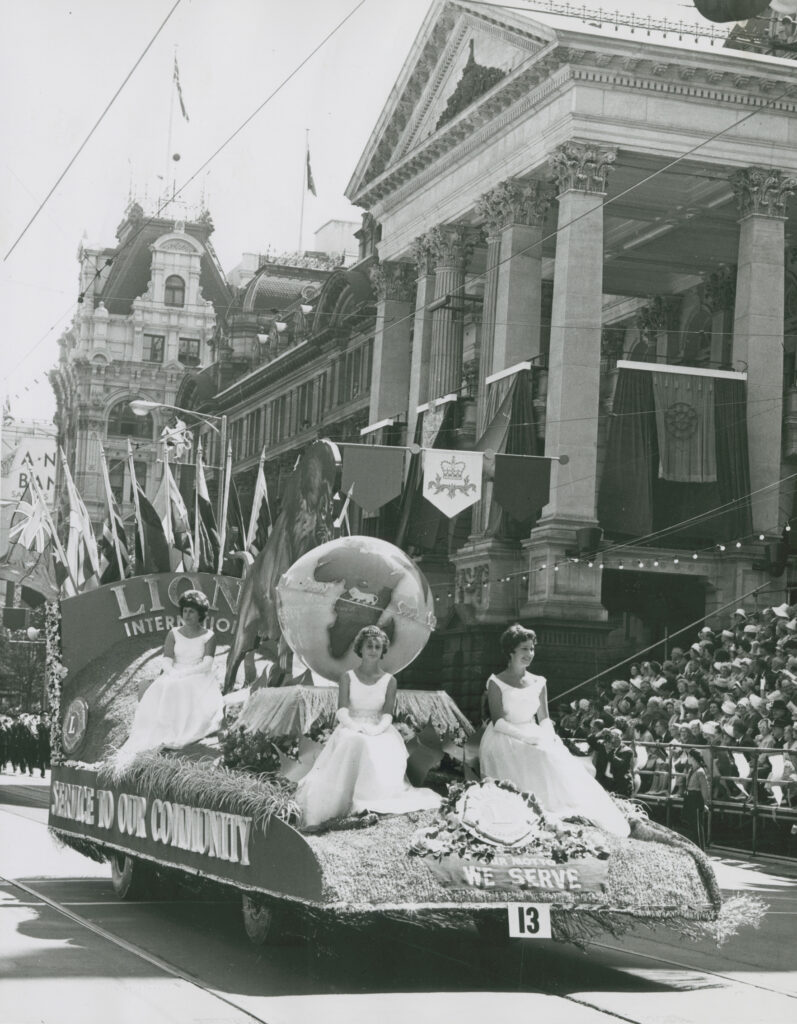
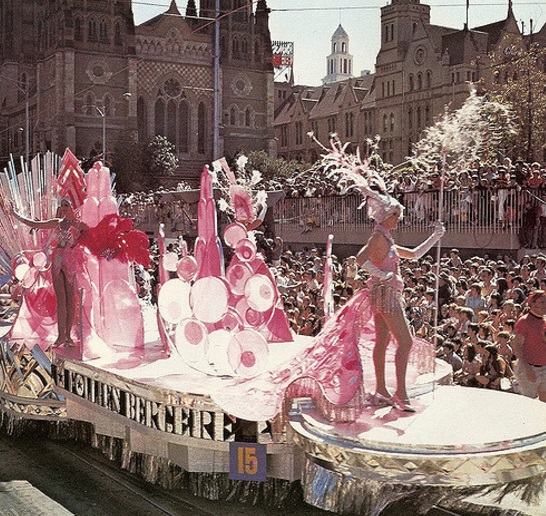
1990’s: A Changing City / A Changing Festival
As Melbourne entered the 1990’s, the city underwent a transformation. The economy was changing, and the cultural fabric of Melbourne was diversifying. The city’s love affair with Moomba continued, but the festival started to reflect more contemporary tastes. Traditional elements of the festival, like the water sports and boat races, where some were slowly phased out as new types of entertainment emerged.
Despite these shifts, the festival maintained a commitment to community involvement, with initiatives that involved local schools, charities, and community groups. The festival also continued to evolve by including more cutting-edge art forms, street performances, and global music trends.
Moomba Today
While Moomba has undergone various transformations since its inception, it remains a beloved event in Melbourne’s calendar. Today, the festival is known for its family-friendly atmosphere, live music performances, arts and crafts markets, street food, and cultural showcases. The Moomba Parade remains a fixture of the event, as do water-related activities on the Yarra River, with some being replaced by more modern displays and competitions.
Legacy of Moomba’s Vintage Era
The vintage era of Moomba is significant in that it helped cement the festival as an essential part of Melbourne’s cultural fabric. The early days laid the foundation for what the festival would become—a dynamic celebration of Melbourne’s diversity, creativity, and sense of community.
The spirit of Moomba continues to reflect the same joyous celebration that it started with in the 1950’s, while also embracing the city’s ongoing growth and transformation. The festival’s vintage years will always remain a nostalgic touchstone for many Melburnians, representing the beginnings of something that would grow into an iconic celebration, beloved across generations.
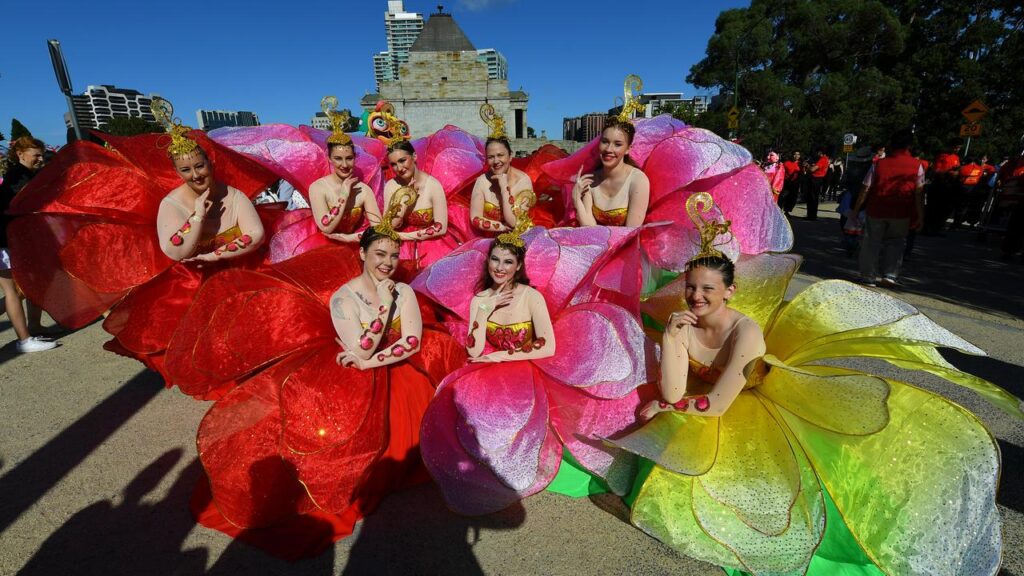
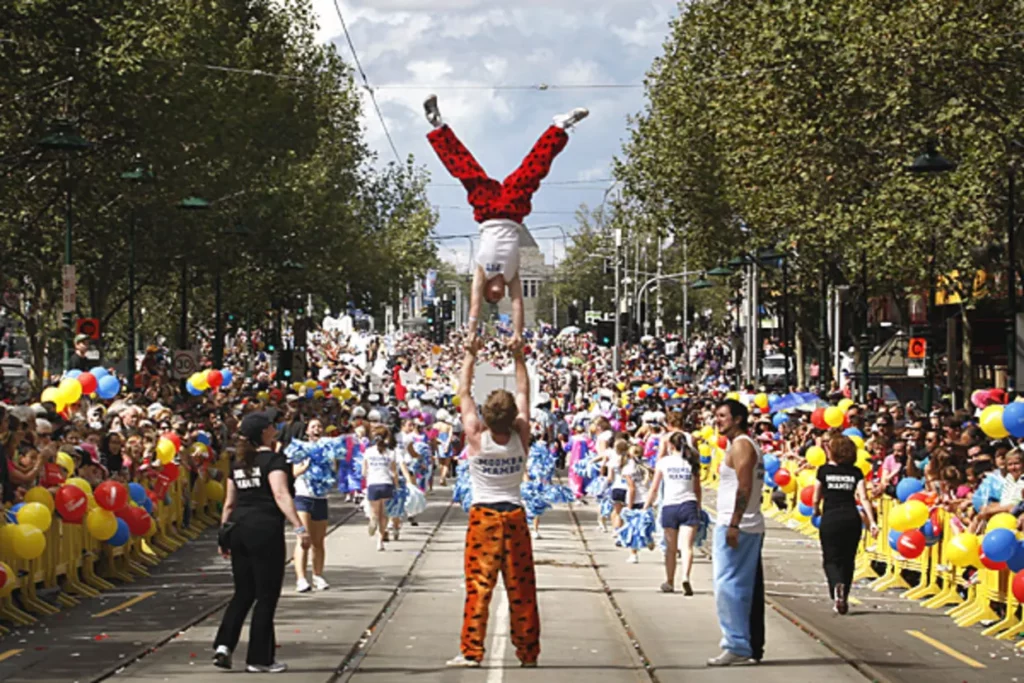
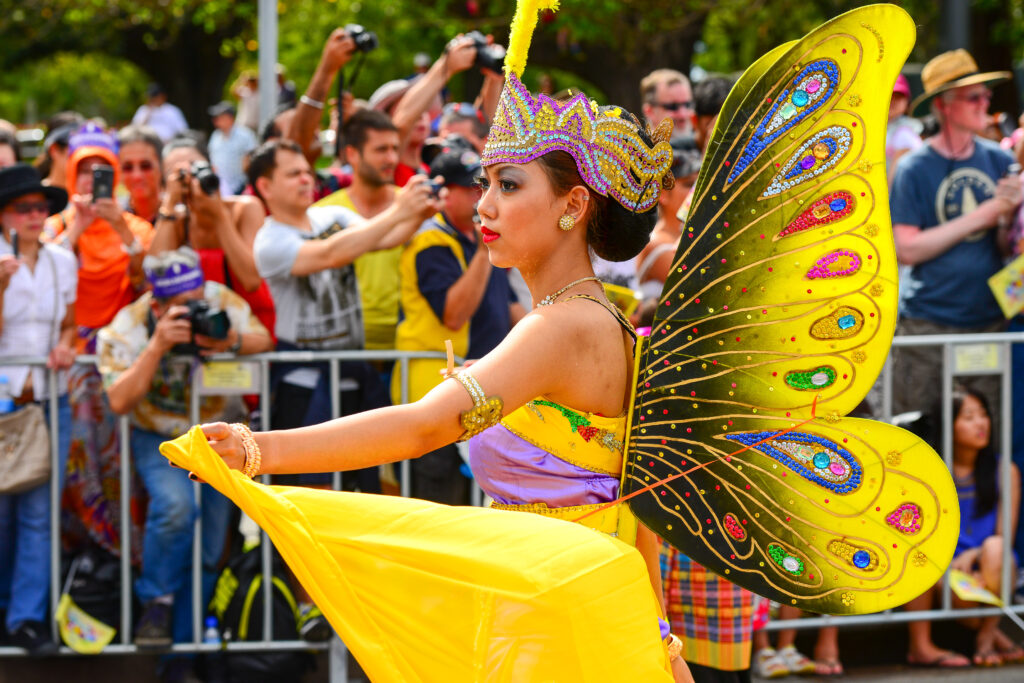
Cultural Significance: Understand what Moomba meant for Melburnians back in the day and how it unified the community.
The Moomba Festival holds deep cultural significance for Melburnians, not just as a major event on the city’s social calendar, but as a powerful unifier that helped to shape Melbourne’s identity and foster a sense of community. From its early days in the mid-20th century, Moomba was about much more than just a celebration—it was a time for people to come together, reflect on their shared experiences, and embrace the vibrancy of their city. Let’s look into this further:
A Post-War Rebirth and City Revival
Moomba’s origins in 1955 were rooted in a post-war desire to restore community spirit. After the challenges of World War II, Melbourne was looking for a way to reconnect and rejuvenate its people. The festival was conceived to lift the mood and offer an opportunity for joyful, communal celebration in a city still recovering from the economic and emotional strains of war.
At this time, Melbourne was emerging as a modern, cosmopolitan city, and Moomba served as a means of celebrating this newfound identity. The festival gave people a chance to embrace the optimism of the 1950’s, as it was one of the first large-scale, city-wide celebrations since the war. For many, it marked a break from the darker years, offering a chance to enjoy life and, importantly, come together as a city.
A Celebration of Melbourne’s Community Spirit
From the very start, Moomba was designed to be inclusive—for everyone, no matter their background or social status. It quickly became a symbol of unity and belonging for all Melburnians. It didn’t matter if you were from the suburbs or the city center, if you were a long-time local or a recent arrival—Moomba offered a chance for all to be part of something bigger.
This inclusivity was evident in the early parades, which featured both corporate floats and local community groups. People from all walks of life participated, showcasing local talent, creativity, and civic pride. Whether you were a school group in the parade or someone enjoying the festivities as a spectator, you felt part of the collective celebration. Moomba’s open invitation to everyone helped foster a strong sense of community.
A Time for Family and Togetherness
In its early years, Moomba was very much a family-oriented festival. The celebrations took place during the Labour Day long weekend (in March), which meant many Melburnians had time off work to attend the festival with their families. This was significant because it made Moomba a time for family bonding, with activities and entertainment that appealed to all ages—from parades to circus acts, and carnival rides to food stalls.
For many families, attending Moomba became an annual tradition, with multiple generations joining together to partake in the fun. The festival’s child-friendly atmosphere made it accessible to parents, children, and grandparents alike, reinforcing the idea of intergenerational unity.
A Platform for Cultural Expression
Moomba also served as a platform for cultural expression, highlighting the growing multicultural nature of Melbourne. In the 1960’s and 1970’s, as Melbourne’s immigrant population began to rise, the festival provided an opportunity for ethnic communities to showcase their customs, art, dance, and food. It helped build bridges between different cultural groups and fostered a spirit of understanding and inclusivity.
During this time, ethnic dance performances, international food stalls, and displays from immigrant communities became common features at Moomba. People of different backgrounds were proud to share their cultural heritage. It became a rich mosaic of cultures celebrating together.
This cultural expression resonated with Melburnians, many of whom saw Moomba as an opportunity to appreciate and learn about the different stories and traditions that made up their city’s identity. It became a meeting point for people to come together and recognize that with different backgrounds, they could all unite in celebration.
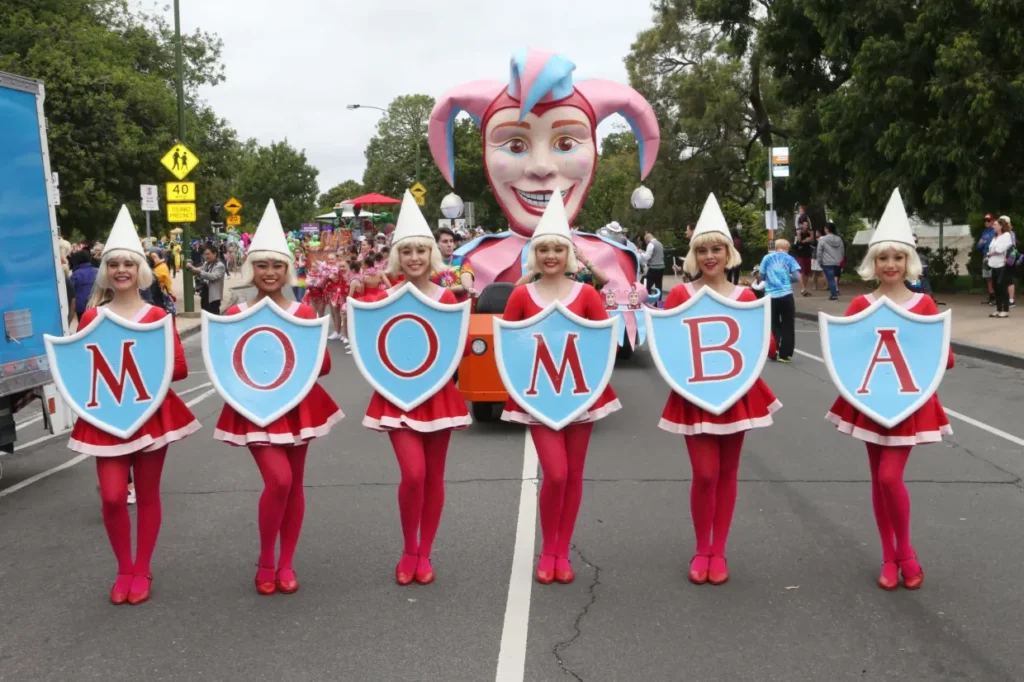
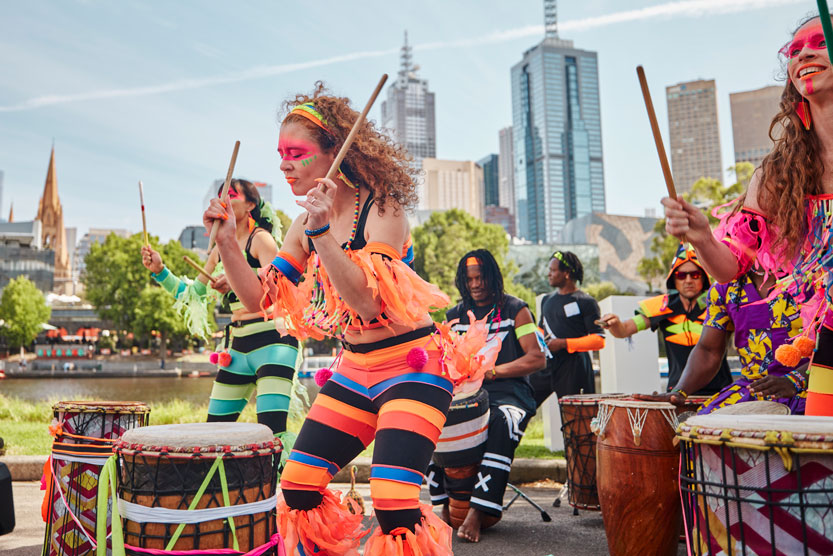
As an affiliate, I may receive a small commission when you click on my links and purchase from this site.
A Unifying Civic Pride
Beyond being a fun, colorful event, Moomba came to symbolize the pride Melburnians had in their city. The festival was about celebrating not just the people but also the city itself—the landscape, the waterways (especially the Yarra River), and the places that defined the urban environment and it’s growth.
In this sense, Moomba united people not just to celebrate their shared experiences, but also to honor the city in which they lived. The festival allowed people to reflect on how far the city had come and to look forward to its bright future.
Creating Lasting Memories and Traditions
The cultural significance of Moomba can also be understood through the lasting memories it created for generations of Melburnians. For many, it was a festival filled with excitement and nostalgia. Families who participated as children later brought their own children to the festival, passing down the tradition. This created an ongoing sense of connection that spanned decades, weaving together the personal histories of the city with the shared cultural experience that Moomba represented.
Conclusion
In the early years, Moomba represented more than just a colorful festival for Melburnians—it was an event that helped shape a collective identity. It was about coming together after a difficult period in the city’s history, celebrating diversity, and strengthening the bond between Melbourne’s residents.
For Melburnians back in the day, Moomba wasn’t just a festival—it was a reminder of the power of community, of shared celebration, and of the joy that comes when a city comes together as one.
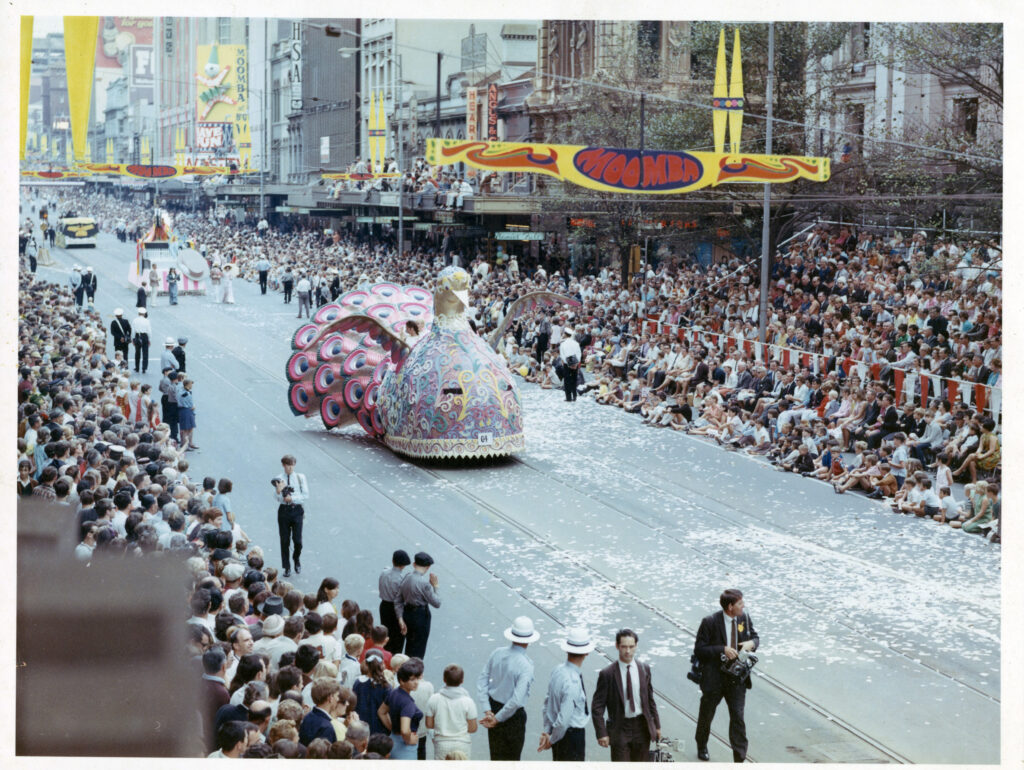
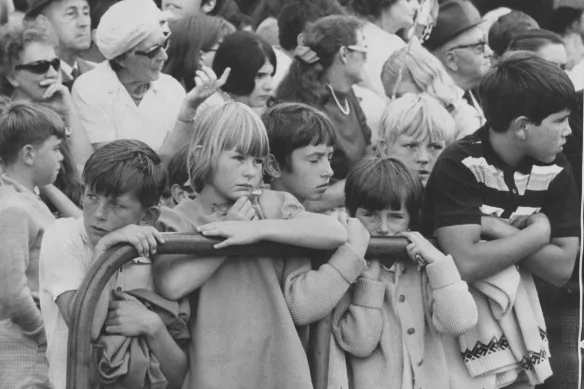
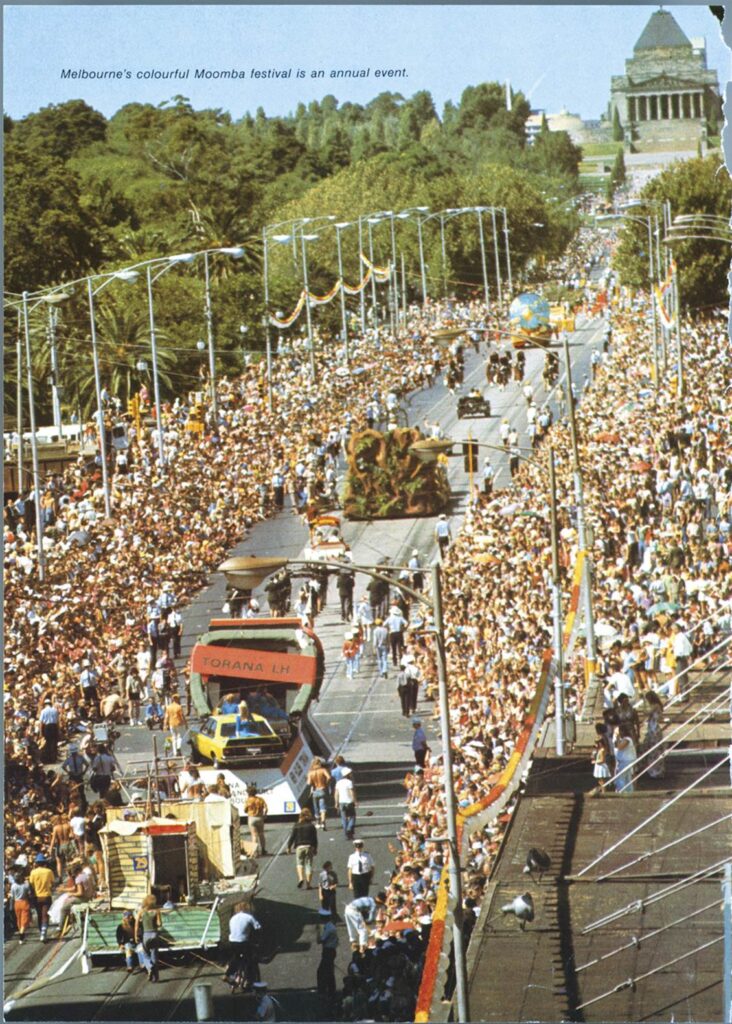
Highlights of the Festivities: Relive the iconic Moomba traditions, such as the grand parade, Moomba Monarchs, and popular events.
The Moomba Festival is filled with a rich history of iconic traditions and festive events that have become beloved symbols of the Melbourne community. Let’s relive some of the highlights of Moomba, especially those iconic traditions that have captured the hearts of so many:
The Grand Moomba Parade
The Moomba Parade is undoubtedly the heart and soul of the festival, and it has remained the festival’s signature event since its inception in 1955. Every year, thousands of Melburnians line the streets to witness this extravagant and colorful spectacle. The parade showcases a wide range of vibrant floats, dancers, performers, and musicians, all designed to bring out the joy and creativity that the festival embodies.
Early parades featured humble floats created by local community groups, but over time, the scale and intricacy of the floats have grown, becoming more elaborate and visually stunning. The parade includes everything from whimsical costumes and theatrical performances to giant inflatable characters and cultural displays.
The Moomba Monarchs
This tradition is one of the most memorable aspects of the festival. Such a title has been awarded to community members, celebrities, or public figures who represent the spirit of the festival. The title is usually given to a person who embodies the joy, creativity, and fun-loving nature of Moomba, and their crowning marks the official beginning of the festival.
The election of the Moomba Monarch is a unique part of the festivities, with a mix of public voting, community involvement, and charity fundraising. The monarch is typically crowned during the opening ceremony, often accompanied by a royal procession.
While the idea of royalty may seem like an old-fashioned concept, the Monarch has always been more of a symbol of the community’s pride and joy rather than an aristocratic title. It’s a chance to celebrate local heroes, or public figures who have contributed to the city in a meaningful way.
Over the years, the Monarchs have included sports stars, TV personalities, musicians, and even local philanthropists. The tradition remains a cherished part of the festival, with the crowning ceremony often creating excitement and anticipation among Melburnians.
The Water Events
Moomba’s connection to the Yarra River and water-based activities is another iconic tradition that dates back to the very first festival. Originally, the water carnival was a central part of the event, featuring a variety of boating races, water sports, and water ski displays. Though the format of the water events has changed over the years, the river and water activities like the Birdman Rally remain a signature feature of Moomba.
In the early years, the festival featured water ski exhibitions and speedboat races on the Yarra River, providing entertainment for both spectators along the riverbanks and those viewing from the bridges and surrounding areas. Today, while the extreme water sports and races have been replaced with more modern activities, the river remains a key component of Moomba’s celebrations.
The Moomba Masters—an elite water-skiing competition, is one of the premier water events of the festival. This competition attracts top-tier athletes from around the world, who demonstrate their incredible skills in front of a cheering crowd. The water events, such as the Birdman Rally – continue to draw large crowds, keeping Moomba’s connection to the Yarra River alive and vibrant.
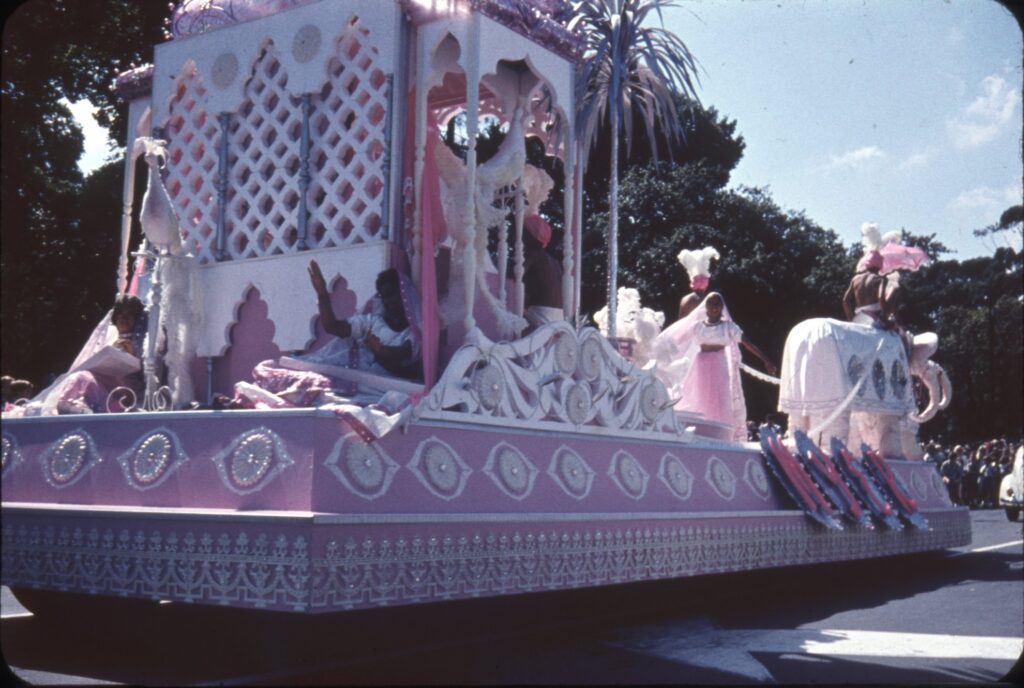
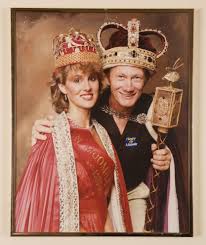
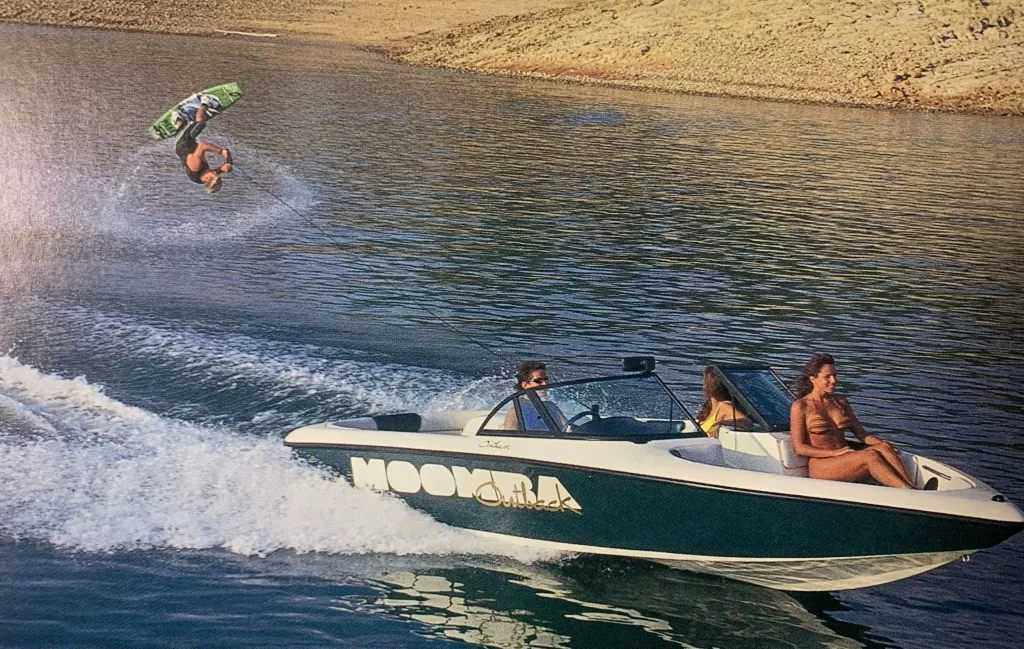
Carnival Rides and Amusements
During the vintage era, the Moomba festival was known for its carnival atmosphere, which included rides, games, and other sorts of amusements. As a family-friendly event, the carnival provided something for everyone, from traditional carousels to ferris wheels, and games of skill like ring toss and shooting galleries.
Though the carnival rides have evolved over the years—becoming bigger, faster, and more thrilling—there’s still a nostalgic element to the fairground atmosphere at Moomba. For many Melburnians, the carnival rides are an essential part of the festival experience. There’s something about the sound of the whirling rides, the smell of fairy floss, and the light-up signs that evoke the fun and energy of the event.
The Moomba Funfair continues to be a major draw, especially for families, offering a mix of classic rides, latest thrill-seeking attractions, and games that appeal to children and adults alike. The carnival has a timeless quality that adds to the festival’s festive and lively vibe, creating a sense of joyful nostalgia for those who have attended for years.
Live Music and Cultural Performances
Moomba is also known for its music performances, with both local and international artists taking the stage. Over the years, the festival has featured everything from rock bands to pop talent stars, and classical performances.
Cultural performances, from ethnic dance groups to street performers, have long been part of the festival. As Melbourne became more multicultural during the 1960’s and 1970’s, Moomba embraced this diversity, with various groups sharing their traditional music and dance on the stage. The festival has thus become a platform for cultural expression, where different communities can showcase their heritage, whether through traditional dance, song, or artistic displays.
The live performances also extend beyond the main stage, with street entertainers, buskers, and community groups providing entertainment in every corner of the festival grounds – making Moomba a dynamic festival.
Moomba Fireworks Display
No festival would be complete without a spectacular fireworks display, and Moomba delivers in spades. The Moomba fireworks have become an iconic part of the festival’s closing ceremony. Each year, the grand finale features a stunning light show, illuminating the Melbourne skyline and the Yarra River with vibrant colors. This fireworks display symbolizes the culmination of the festival’s fun-filled celebrations, and it’s a moment that often leaves attendees in awe, marking the end of another unforgettable event.
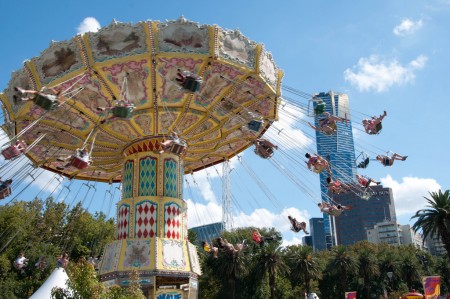
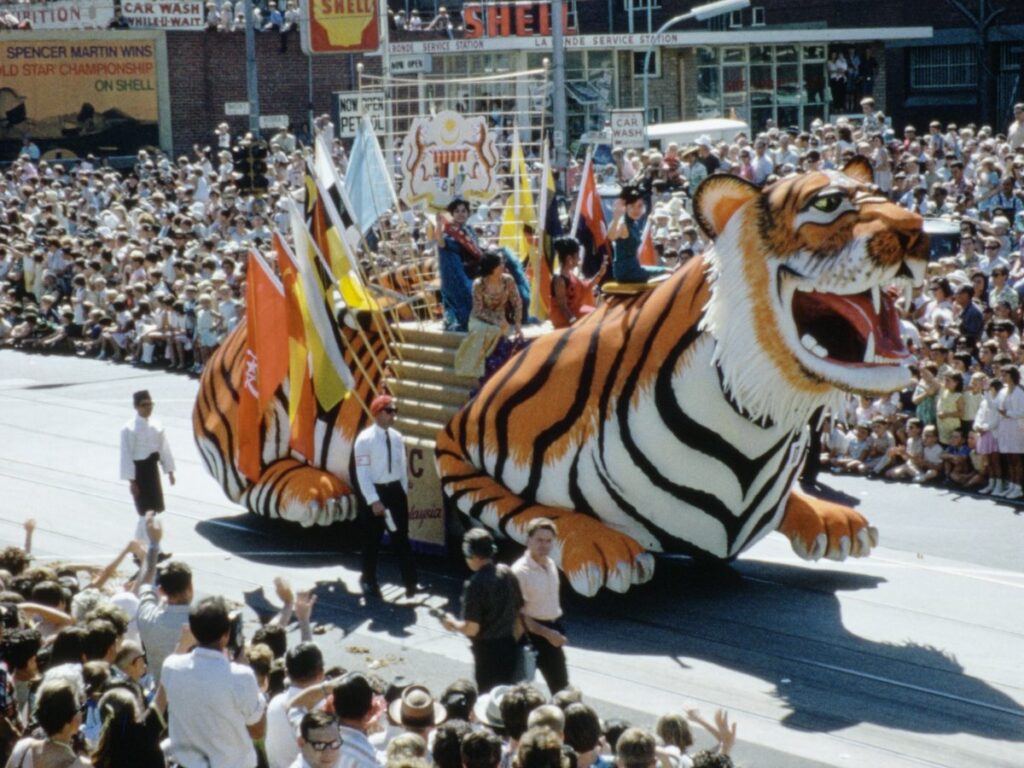
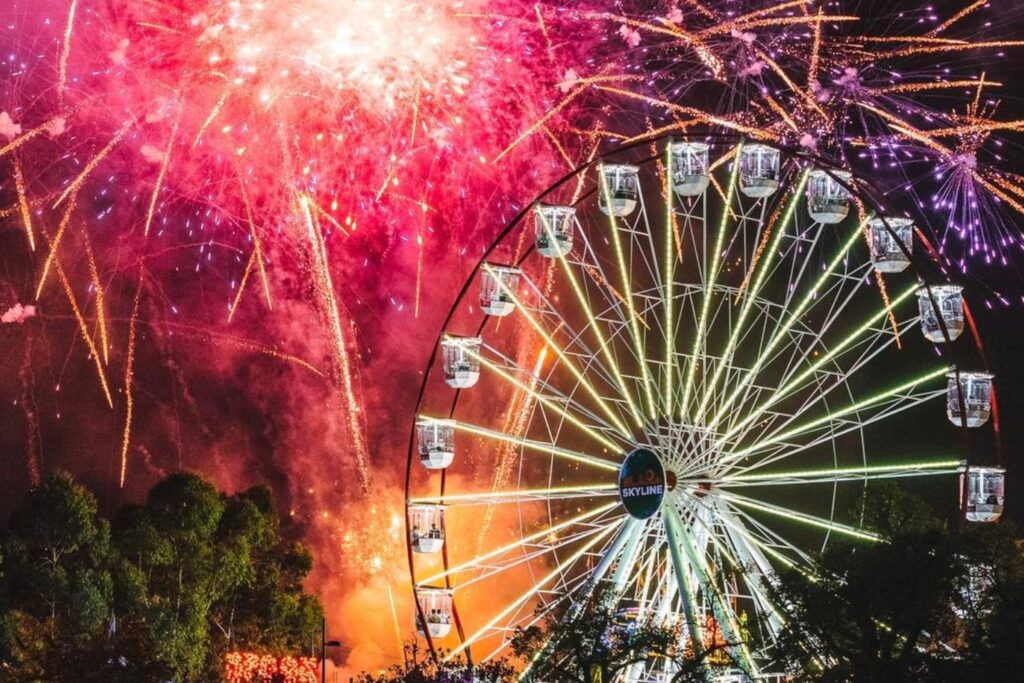
How fashion played a role in the Moomba Celebrations
Fashion played a significant role in shaping the vintage Moomba celebrations in Melbourne, Australia. As one of the city’s most iconic festivals, Moomba, which started in 1955, reflected the social and cultural trends of each era through its parade costumes, beauty pageants, and streetwear. Here’s how fashion influenced Moomba in its earlier decades:
Parade Costumes and Pageantry
- Moomba’s grand parades featured elaborate costumes that mirrored the fashion trends of the time.
- In the 1950’s and ‘60’s, the Moomba Queen and attendants wore glamorous gowns inspired by Hollywood fashion, often featuring full skirts, cinched waists, and elegant gloves. You can also do a cosplay with similar gowns bought through Amazon today – have a look at these styles.
- The floats were designed with stylish themes, showcasing Australian designers’ creativity in both couture and theatrical costume design.
Influence of Post-War Fashion (1950’s-1960’s)
- Post-war prosperity influenced Moomba fashion, with women donning elegant dresses, pearls, and hats, while men sported sharp suits and fedoras. Scroll through and select some beautiful 50’s inspired dresses here. Hats and fascinators reminiscent of the 1950’s are located here. Vintage style pearls and chokers are sourced online today, learn more. Look at some styles for men’s tweed or 3 piece suits at this store online. Fedora hats still as popular today – buy yours here.
- Swimsuit competitions – a common feature of mid-century beauty pageants, reflected the rise of beachwear trends, particularly in Australia’s surf culture. 1950’s inspired swimsuits are gaining popularity even today – take a look at what’s available online. Plus sizes are also common through this store.
The Swinging ‘60’s and ‘70’s: A Shift to Youth Fashion
- As Moomba became more youth-focused, styles shifted toward mod fashion in the ‘60’s with bohemian influences in the ‘70s.
- The festival embraced miniskirts, bold prints, flared pants, and vibrant colors, which became a staple in the parade and street festival fashion. A few ideas came to mind here online for a vibrant 1970’s look – learn more today.
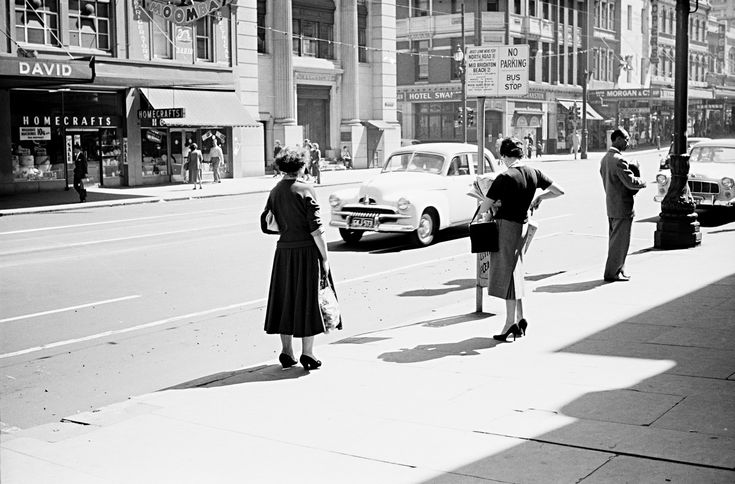
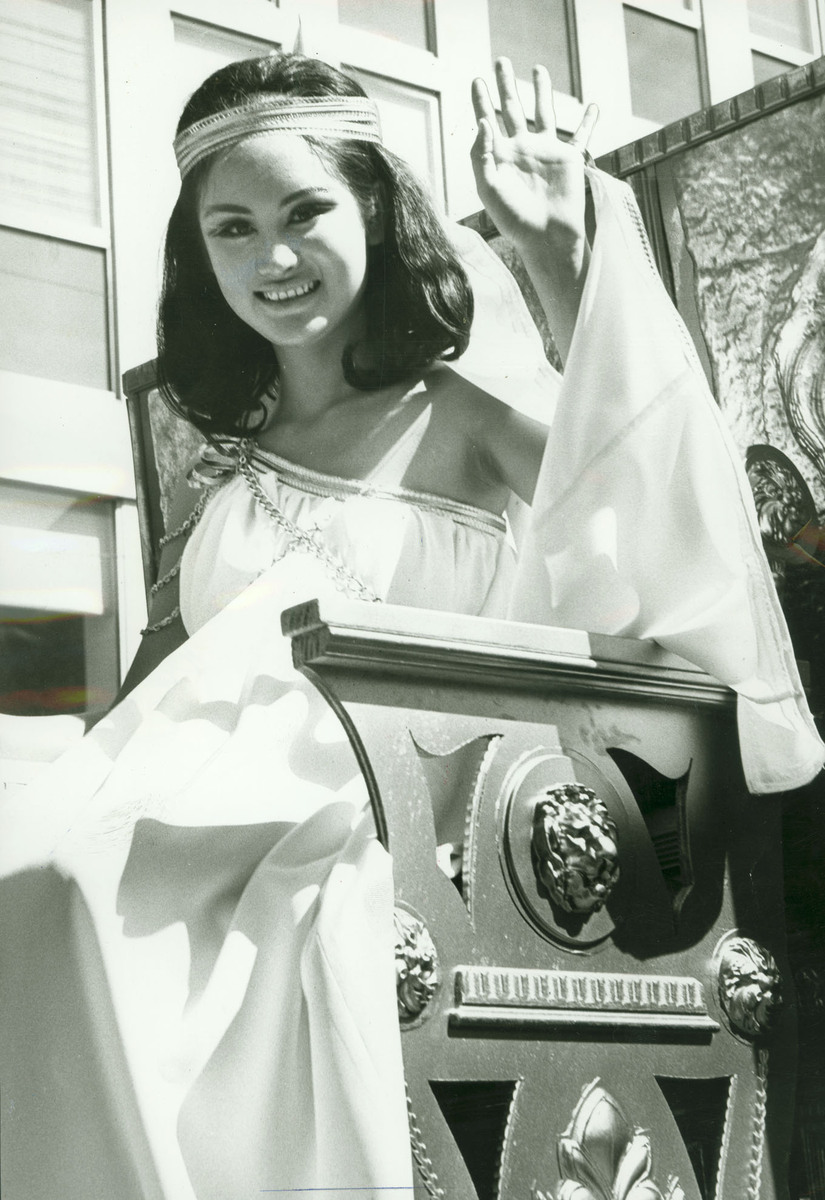
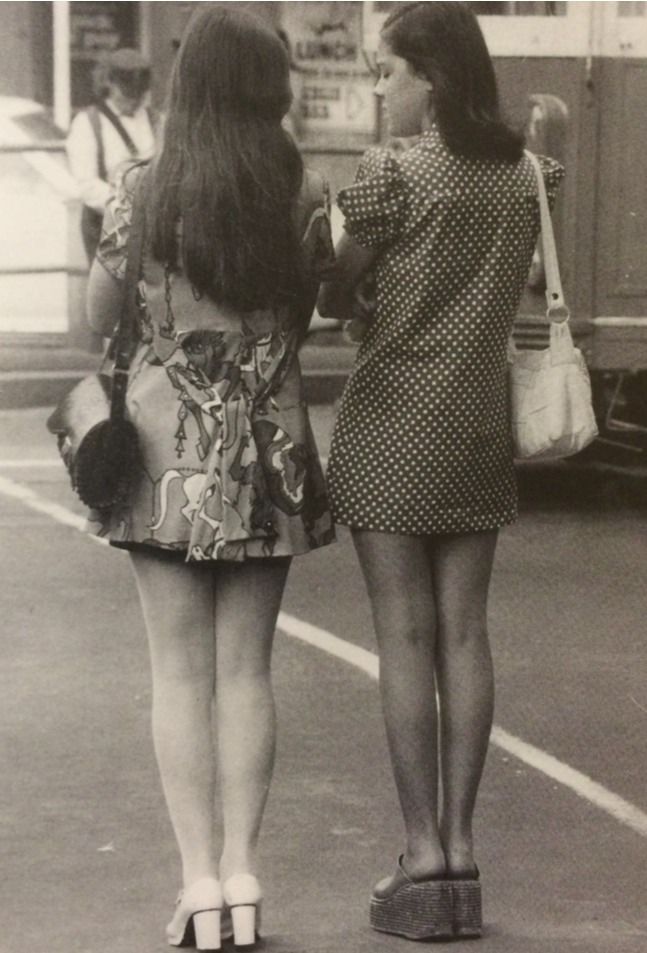
1980’s and ‘90’s: Casual and Streetwear Influence
- Moomba evolved with Melbourne’s growing street culture, incorporating activewear and casual fashion trends. Find your vintage inspired activewear right here – selections available through Amazon online.
- Bold colors, oversized silhouettes, and sportswear became part of the Moomba experience as the festival focused more on music and performances showcasing the latest styles.
Conclusion
Fashion at Moomba reflected Melbourne’s evolving cultural identity, from the elegance of mid-century pageantry to the youthful, expressive street styles of later decades. Whether through parade costumes, festival-goer outfits, or themed events, fashion played a key role in shaping the visual and cultural spectacle of vintage Moomba celebrations.
Memorable Moments of Moomba from the early years compared with today
Moomba, Melbourne’s iconic annual festival, has transformed significantly since its early years in the 1950’s. Here’s a comparison of memorable moments from its early days versus today’s events:
Early Years (1950’s-1970’s)
1955 – The First Moomba
-
- Moomba was created to celebrate Melbourne’s culture and attract tourism.
- The first Moomba Parade, with its grand floats, marched through the city, becoming an annual tradition.
- A key feature was the crowning of the Moomba Monarch, originally chosen from celebrities and dignitaries.
- Waterskiing on the Yarra River
- Since the early years, the Moomba Masters water skiing tournament has been a crowd favorite.
- Spectacular stunts and jumps became defining features of the festival.
- Fireworks & Family-Friendly Events
- Fireworks displays over the Yarra River were a major attraction, setting a tradition still alive today.
- Community and family-focused events, including carnival rides, were central to Moomba’s appeal.
- Controversial Monarchs
- In 1976, rock singer Normie Rowe was crowned Moomba King, leading to some backlash as people debated the festival’s identity—traditional or modern.
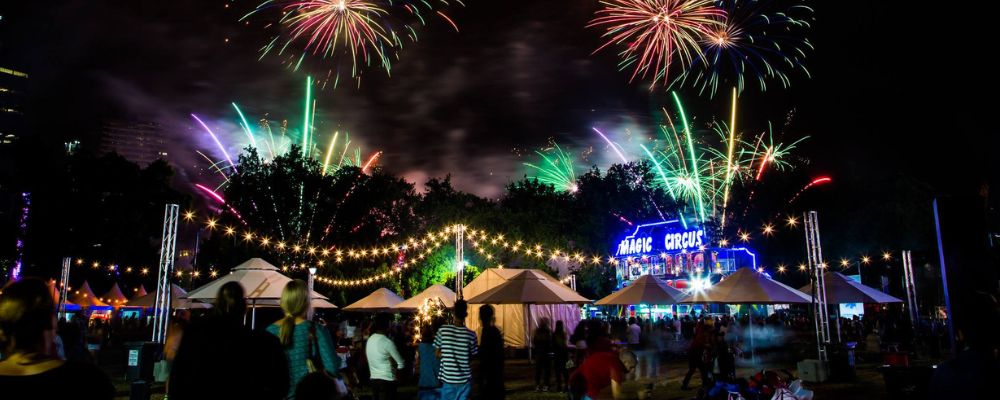
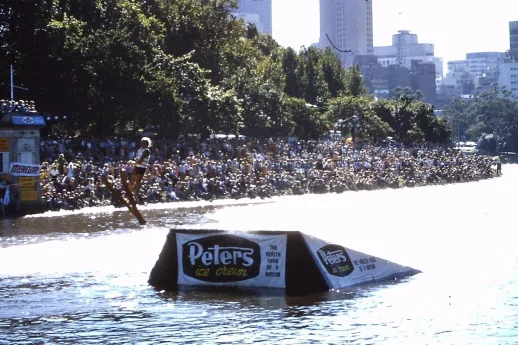
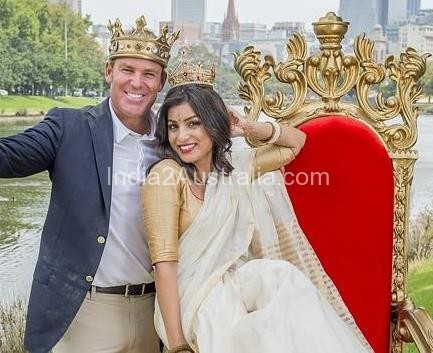
Modern Moomba (2000’s-Present)
Inclusive and Diverse Celebrations
-
- The festival now embraces Melbourne’s multicultural identity, featuring diverse performances, food stalls, and global music acts.
- More interactive community participation, including cultural dance performances and workshops.
- Modernized Moomba Parade
- The parade remains a key feature, but with greater community involvement, including schools, multicultural groups, and performers.
- Floats have become more elaborate, featuring new technology and LED displays.
- Evolving Moomba Monarch Tradition
- Celebrities, athletes, and notable Melburnians continue to be chosen, but now it’s often local figures or sports icons rather than international celebrities.
- Extreme Sports & Events
- BMX and skateboarding competitions have been added alongside water skiing, appealing to younger audiences.
- Stunt acts, such as high-flying motorbikes, have become a new attraction.
- Environmental & Sustainability Focus
- In recent years, efforts have been made to reduce waste and implement sustainable festival practices.
- Growing Crowds & Digital Reach
- Attendance has increased significantly, with over a million visitors yearly.
- The festival now engages audiences worldwide through social media and live streaming.
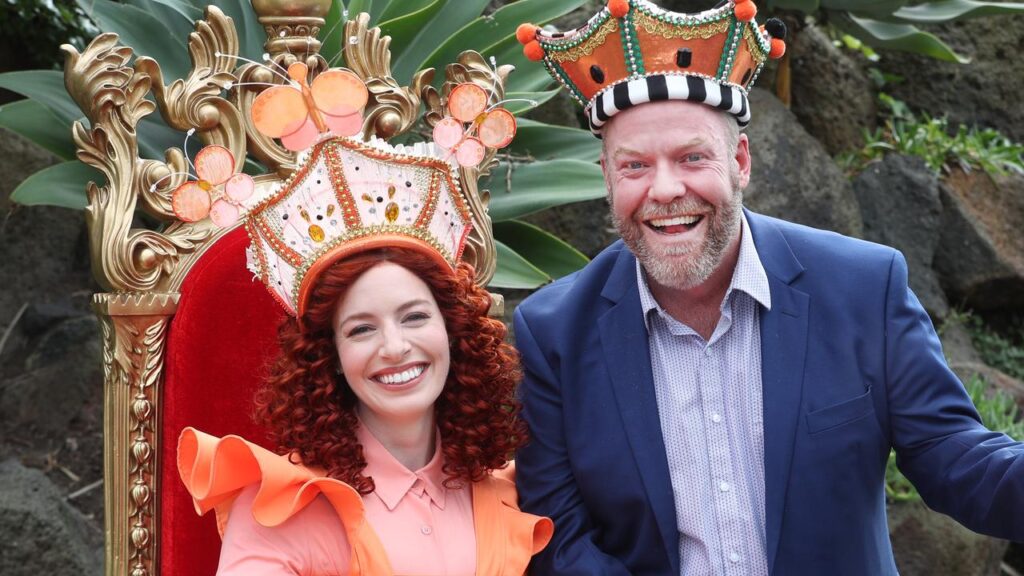
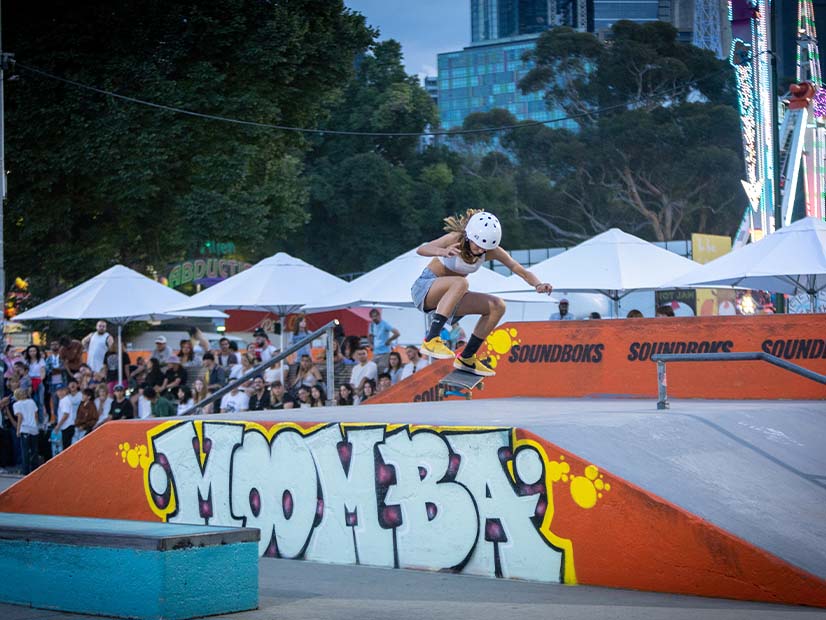
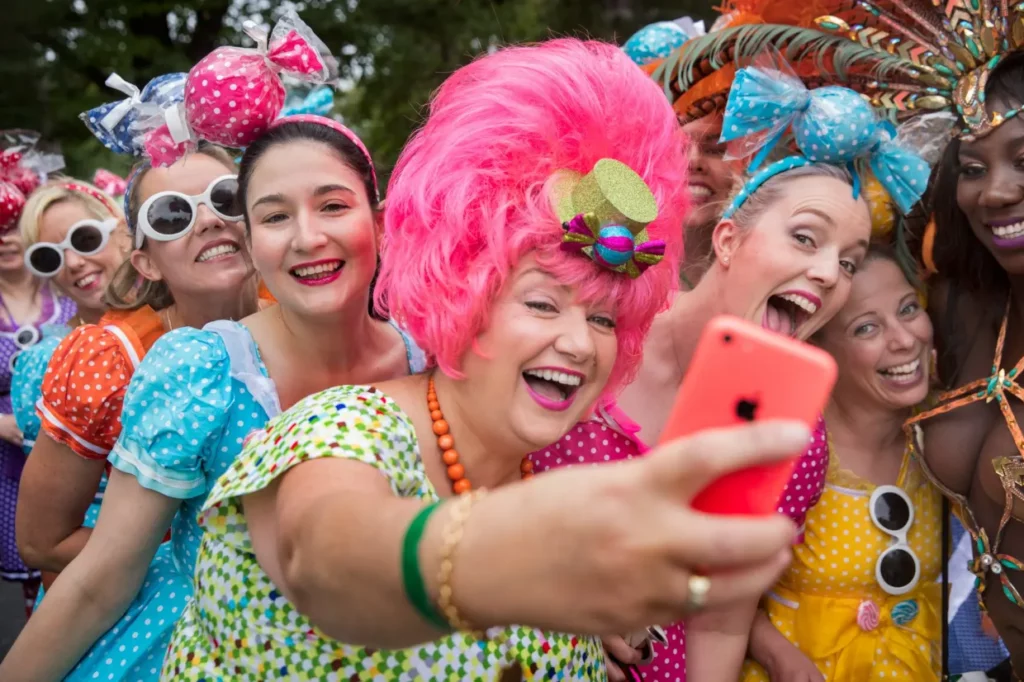
Conclusion
While Moomba’s early years focused on tradition, royalty, and family fun, the modern festival has evolved to be more inclusive, diverse, and engaging for younger generations. The spirit of community celebration remains strong, keeping Moomba a highlight of Melbourne’s cultural calendar.
It’s been a memorable post to revisit – many great memories of Moomba celebrated in the past over the decades.
Thanks for reading, any questions or comments feel free to leave below, or simply follow us on our socials here:
https://www.facebook.com/vintageclothesandaccessoriesaustralia
https://www.instagram.com/vintageclothesandaccessories
